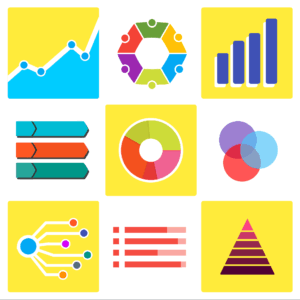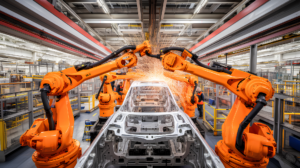The Building Blocks of AI
To reflect on the broader evolution of AI, many in the community have pointed out that AI is not exactly a newcomer to the discipline. Remesh, in its insightful article by Gary Ellis, “The Evolution of AI in Market Research: My Perspective,” points out that as far back as the 1980s, “expert systems” represented a major AI innovation.
“These knowledge-focused programs helped corporations automate complex tasks in data mining, robotics, logistics, speech, and medicine.” The 1990’s saw a lot of progress with, as Remesh notes, developments in machine learning, tutoring systems, reasoning approaches, and language comprehension. “The building blocks were being put in place for AI’s eventual application to market research. While limited compared to today’s capabilities, these earlier eras of AI progress set the stage for the transformative predictive modeling and natural language advances that kicked the AI and market research relationship into high gear starting in 2014.”
Early predictive models were rapidly developing in 2014, and Remesh notes that scaled up abilities such as analyzing conversational data and text analytics, were becoming more prevalent. This led to today’s tech-led environment, where large language models (LLMs) like ChatGPT have come to the fore. Market research tasks could now be accomplished in seconds.
Remesh observes, “The scale of data and computing that these models can leverage results in remarkably general capabilities that mirror human abilities. With the right prompts, LLMs can process language, reason about knowledge, summarize texts, answer questions, generate content, and even hold conversations, as well as most humans can… The emergence of LLMs has had a bigger impact on market research than everything that came before combined. After all, its capabilities align so well with core market research capabilities of making sense of qualitative data and eliciting insights from consumers.”
Easy accessibility and user-friendly interfaces of LLMs have expanded what’s possible. Indeed, Remesh notes, “LLMs can instantly summarize consumer feedback into succinct key takeaways that can be emailed to stakeholders. They can answer natural language questions about datasets as if they have read and deeply understood the data. They can even generate entire sets of survey questions or guides to interact with consumers, needing only high-level guidance like a research objective as input.”
According to Remesh, researcher applications of AI include:
- Draft research questions
- Analyze volumes of responses
- Output usable, actionable insights
- Summarize key themes
- Model customer sentiment over time
- Write initial draft reports
- Create dialogue at scale
The Role of Human Researchers
Of course, along with these advanced technologies, it’s still important to have human insights and human supervision of these AI systems. This includes taking a strategic approach to AI, as well as building direct experience, optimizing workflows, and experimenting with use cases.
“I think human judgment, oversight, and course correction will remain essential in five key areas for the foreseeable future,” says Ellis of Remesh:
1. Setting Overall Research Direction: Humans must determine core objectives, populations of interest, and research needs to frame projects. AI can subsequently help design research instruments and interact with samples to fulfill human-defined goals.
2. Validating AI Outputs: AI-generated insights, questionnaires, conversational flows, and analyses should all be reviewed by experienced researchers—even if it is just spot-checking.
3. Interpreting Results: Once research outputs have been validated for accuracy, making sense of the meaning of situations at hand depends on human judgment to account for nuances in context AI may miss.
4. Recommending Strategic Decisions: The human researcher should still validate and evolve the strategic decisions the AI output seems to suggest based on their experience and understanding of the project.
“While AI promises to expand what is humanly possible in market research, humans themselves are not getting replaced completely. The most valuable result of the collaboration is letting AI greatly boost research volume, scale, and processing speed while humans provide oversight for quality, meaning, and wisdom,” says Remesh.
Reimagining Research
During the AI in Action Summit at the upcoming TMRE conference, Kajoli Tankha, Senior Director, Consumer Marketing Insights at Microsoft, and Jenny Reece, Senior Research Manager, Research and Insights at Microsoft, will hold the session, “Enhancing Research and Exploring AI’s Evolution.”
AI is set to revolutionize market research, much like the Internet once did. At Microsoft’s Central Research team, we’re tackling two key challenges: defining and communicating AI’s value and reimagining research through AI. In this session, we’ll share our journey—the missteps, lessons learned, and how we’re evolving in this transformative era.
AI-Human Collaboration Can Lead the Way
After reviewing Remesh’s brief history of AI developments, we can still summarize that it’s the AI-human collaboration in market research that is a key element during its evolution. AI-powered research has arrived but it’s ultimately human expertise that will power the operation’s spirit. As Remesh points out, AI dialogue at scale, simulations and synthetic respondent panels may all be areas of growth moving forward, as well as agentic AI capabilities.
“AI greatly expands what is humanly possible, allowing market research at scale once unthinkable,” writes Remesh. “Meanwhile, human oversight ensures quality control and contextual wisdom machines lack. The power comes in aligning the right AI tools to the right use cases for each researcher.”
Video courtesy of AYTM.com/Ask Your Target Market
Contributor
-

Matthew Kramer is the Digital Editor for All Things Insights & All Things Innovation. He has over 20 years of experience working in publishing and media companies, on a variety of business-to-business publications, websites and trade shows.
View all posts


























































































































































































